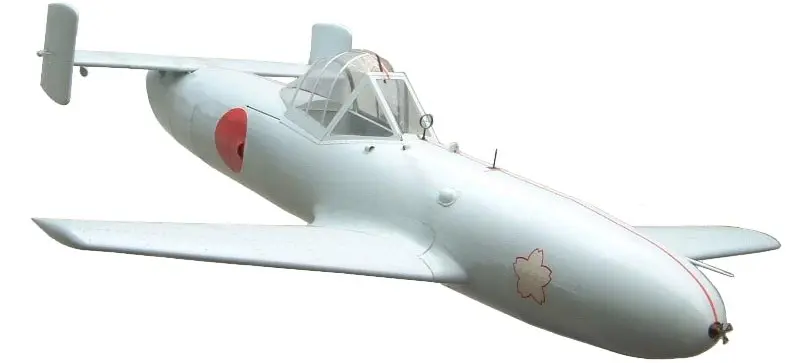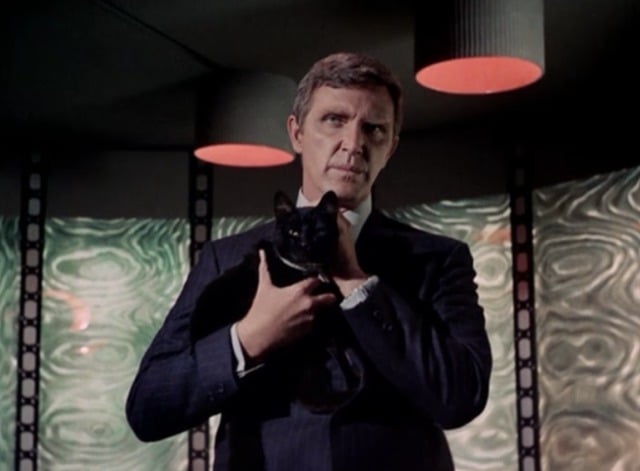Of course the pic of the long-range fighter is a P-51, which always gets all the credit for that shit. But the P-47N was built to escort B-29s all the way from the Marshall Islands to Japan and back, and had a range in the neighborhood of 3000 miles - simply astonishing when you consider how short-legged fighters were at the beginning of the war (Battle of Britain Bf109s could barely make 400 miles).
The wunderwaffe was a last ditch propaganda attempt to boost morale of the Germans. Which kind of worked because many Germans still believed in the “final victory” with wunderwaffes along the way to save them, in spite of the Allies being at the gates of Berlin.
To be fair, I might stick it out if I thought wonder waffles were coming.
Given the now known precision of Russian high tech missiles, your chances should be good against WW2 high tech weapons
Tank destroyers with rotating turrets.
There were really two different groups of tank destroyers in WW2.
The US and UK wanted something that would prevent a situation akin to what came up in the Battle of France, where fast-moving German armor penetrated lines and performed a successful massive exploration through that breach.
They had fast vehicles that were intended to fight from concealed, defensive positions. But those vehicles had to be able to get out in front of an armored breakthrough in time to parry the thrust. What was critical was speed.
Germany and the Soviet Union, out on the Eastern Front, needed heavily-armored vehicles with big guns to slug it out over open fields with long fields of fire.
While, yes, both were aimed at fighting armor, they weren’t really aimed at the same role, and I kind of wish that the two groups of vehicles had gotten different names, rather than “tank destroyer” being applied to both.
But also topless, because what are mortars and hand grenades?
Cue !MilitaryMoe NSFW in 3…2…1…
There is another: https://en.m.wikipedia.org/wiki/Mistel
Leave it to the Germans to name their weapon after what was used to kill the diety, EVERYONE liked. (Balder)
The Germans were notorious for using on-the-nose naming conventions. For example a radio-homing system was called “Odin”, which the British correctly guessed was using one transmitter rather than the usual two because Odin only had one eye.
The lesson here is that when picking code names, pick random words from the dictionary.
Nonshitpost comment: A video I like to recommend on tank production illustrates the differences in mindset for industrial production.
Summary is that the US had mastered assembly line production and the use of subassembly parts to minimize production time. The US military had a centralized body to evaluate and approve different variants, which meant production stayed smooth.
The Soviets lacked experience with this kind of mass production by they quickly caught on and adapted in a logical way. They used assembly line production, but didn’t use subassemblies from different factories, as that would clog up their rail lines and spread out the factories needed to be defended. Instead they centralized so that trains brought raw materials to factories and left with finished tanks.
The Germans built tanks with a team of people who would continually work on one tank, crafting it. This was much slower. There was also too much of a direct line between many different military commanders and the tank production, allowing commanders to constantly put in their own personal special requests, further slowing down production as so many tanks had to have special modifications (that weren’t important to the big picture).
I’ve seen (what I think is) a different video that made a similar point. I wish I could remember it well enough to find it again.
This is missing the manned surface-to-air missile, one of the most batshit concepts of WW2 imo:
“The primary role of the relatively untrained pilot was to aim the aircraft at its target bomber and fire its armament of rockets. The pilot and the fuselage containing the rocket engine would then land using separate parachutes, while the nose section was disposable.”
I was picturing something more like a Kamikaze.
You’re thinking of the Reichenberg-Gerät, although the Nazis were crazy they weren’t crazy enough to actually use it.
There were a small number of kamikaze attacks against Oder bridges in conventional planes. https://en.wikipedia.org/wiki/Leonidas_Squadron#Oder_bridge_attack_missions,_April_1945
There also was a squadron of conventional fighters dedicated to fly ramming attacks against bombers, which was used. https://en.wikipedia.org/wiki/Sonderkommando_Elbe
Eventually, these tactics are not that crazy. In war, lives and machines are expended to reach a goal. If some tactics seem crazy, then only because that fundamental fact is harder to ignore.
I think it is important to add, that, in contrast to japanese tactics, the german pilots were not necessarily expected to die. It was “just” extremely risky and a bunch of them did actually survive.
The pilots were expected to parachute out either just before or after they had collided with their target.
The fighter pilots ramming bombers were expected to bail out. There were survivors.
The pilots of the Leonidas squadron were expected to “self-sacrifice” in their attacks on bridges. They faced rather less social pressure than Japanese pilots, though.
IDK the reason they didn’t deploy that thing, but it certainly wasn’t prudence or concern for pilot safety because the Me163 rocket plane was used.
The Me163 was supposed to be reusable, including the pilot, the Reichenberg was one time use only, including the pilot.
The Me163 was supposed to be reusable, including the pilot
The pilot was reusable, if you count fertilizer as a re-use.
rocket planehuman-guided missilepotato, missile-o
The flower is very kawaii.
Natter indeed.
The pigeon-guided bombs were more batshit, although paradoxically probably a lot more practical.
Wow! I was just watching the anime, Saga of Tanya the Evil, and it had these in it. I assumed it was anime craziness.
Does anyone else remember BF1942: Secret Weapons? This shit was a riot to cruise around in
Anyone have a guess as to what the bottom left picture might be? Just looks like some weird stairs.
That’s the Kanone V-3, a super long range artillery gun intended to shoot at London.
Great point, especially towards fans of nazi overfucked tech
Is “engine life of five hours” correct? Would the engine need replacement after five hours of flight time? Damn, that sucks.
One of the under-appreciated benefits of the Allies’ successful invasion of North Africa was that it cut Germany off from their main sources of stuff like chromium, cobalt and nickel, elements that are alloyed with steel to produce material that can resist the kind of high temperatures that jet engines produce. This forced them to manufacture turbine blades from ordinary steel, which doesn’t work very well.
Interesting. Thank you!
It was more like 10-35, but it appears to be a reference to the Junkers Jumo 004.
I wouldn’t mind a fighter with the range of a bomber. I end up never using fighters unless I’m being invaded because of its short range, but the initial biplanes can only be remodeled into fighters so I’ll end up having a couple of them every time. I still need to give the P-51 mustang a try, they seem to have a slightly better range.
I will not hear sass directed at my best boy Schwerer Gustav
Which was nothing compared to the Paris Gun from WWI anyway.
PING!
Also, let’s not forget “Tank that doesn’t murder the crew when it’s mission-killed” and “Jeep”
Also long lance VS buords shit-baby.
The “Long Lance” was Japanese, though. And FWIW it was never called that during the war by either side. “Long Lance” was a postwar invention by an author, and a frankly dumb one - all lances are long, that’s kind of their thing.
I didn’t remember the name of either offhand, just that we had a supposed wunderwaffen that completely failed to detonate while the Japanese torpedo was fairly deadly.
Looked around a little, the type 93 managed to take down a bunch of ships including the cv8 hornet.
They were mean fuckers.
The Type 93 was the most potent torpedo of the war, by an enormous margin. In retrospect, it’s kind of amazing that the other combatants mostly abandoned the concept of running torpedo engines off of compressed pure oxygen, given how much doing that added to range, speed and payload (the British did a little bit of oxygen enhancement for the torpedoes aboard the Nelsons, which of course were never used except for trying to finish off the already-destroyed Bismarck). I guess their tendency to explode on startup dampened everybody’s enthusiasm a little bit. I don’t think Hornet was sunk by one, though, since she was sunk by a submarine and Japanese subs didn’t carry them (too dangerous and heavy to have oxygen generators aboard submarines).
People tend to poo-poo Japanese military technology from WWII, but without question they had by far the most deadly torpedoes and the most deadly guided missiles. Also the Yamatos would have beaten any battleships they encountered in a one-on-one duel, so arguably they had the best battleships, too.
We did have the Mark 13 torpedo, in the “disaster” category.
Germany had her own torpedo problems, but the Mark 13 went out the door in abysmal form, and we were extremely slow to get the problems fixed. And we were fighting a war with more naval focus than was Germany.
And while we had work on the VT fuse and would have eventually gotten there, that was really the Brits. They gave us their work and we finished the work to put it into a shell.
And some of our concepts, though we ultimately made use of them in some way, failed in their original form.
The idea that ships would be a sitting duck for high-altitude level bombers was just wrong. Down the road, yes, but not in WW2. Billy Mitchell really oversold the state of things. And while it wasn’t catastrophic for us, it did hurt our initial ability to respond to naval forces.
The B-17 concept that massive interlocked fields of fire from defensive guns would permit bombers to sail past fighters didn’t really work. It was in a stronger position than the Lancaster for daylight bombing, but we took horrendous losses; ultimately long-range fighter escort was still required.
We initially drastically overestimated what our early radars could do for us in naval night-fighting, and it led to things like the Battle of Savo Island. The Brits seriously bailed us out here with the cavity magnetron.
Germany also had some significant wins. Yeah, they didn’t have the semi-auto rifle as a standard issue, whereas we had the M1 Garand. But they did have the assault rifle, in the form of the StG 44. They had the general machine gun in the form of the MG 34.
The MG 34 wasn’t as big a win as people think it is. It was a better belt fed weapon than the 1919 30 cal. But that’s because we were focusing on offensive support weapons while they were focusing on defensive ones. Thus we made the BAR and deployed it to as many squads as we could. They made the MG 34 and 42, which were better defensive weapons.
They did have a big issue though, they used too much ammunition. Modern GPMGs fire at half or even a third the ROF. (The MG 42 could do 1500 rounds a minute!) This not only had a bad effect on supply but also severely shortened their barrel life in combat.
Over all it seems hard to pick out the difference between a GPMG and a SAW these days but that BAR/MG 34 difference is where it’s rooted.
Needs 3000 of what, to operate?
Just 3000 of whatever you have on hand, generally
Well, I have this bag of rice…
To be fair I believe the Wehrmacht really wanted to move to issuing more small arms like the G43 and the STG/MP44 but Hitler was shortsighted and spiked the STG44 project personally.













